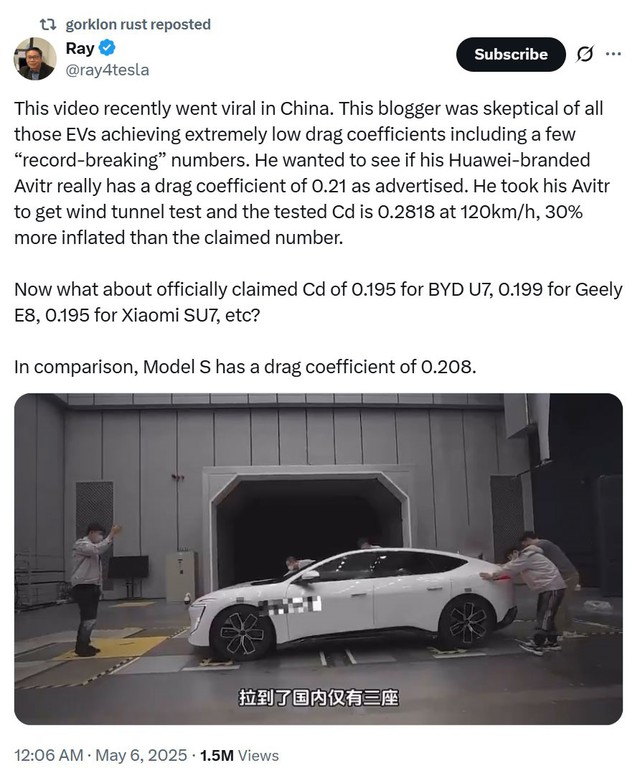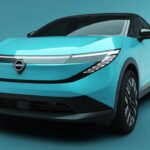In China, social media has been abuzz with surprising information about the drag coefficient of the Avatr 12 – a domestic Chinese electric vehicle. The incident unfolded when a user in the country independently tested the vehicle and obtained results that differed significantly from the officially published data; the entire testing process was recorded and shared on Chinese social media.
The situation escalated when billionaire Elon Musk, the head of Tesla, shared this information on his personal social media account.
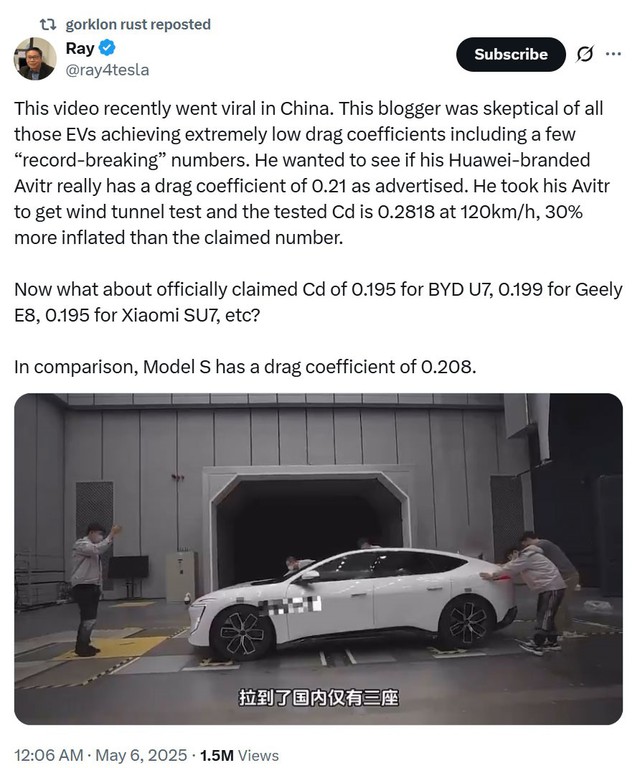
Elon Musk shares the post about the incident on his social media.
Specifically, the user’s independent test results indicated that the Avatr 12 had a drag coefficient of 0.2818 Cd at a speed of 120 km/h, while Avatr claimed a coefficient of just 0.21 Cd.
With these results, the user argued that the car’s drag coefficient was comparable to that of a late-1990s gasoline car, such as the Volkswagen Passat B5 (with a drag coefficient of 0.27 Cd).
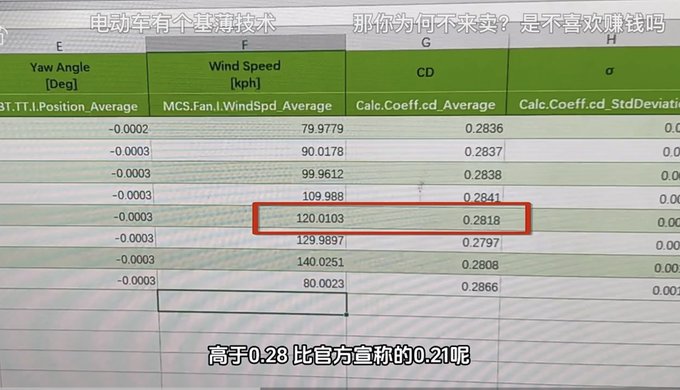
The image above allegedly shows the drag coefficient test results for the Avatr 12.
Prior to this, a video posted on May 2 on Chinese social media detailed the drag coefficient test in a specialized wind tunnel. While the user did not specify the name of the vehicle, it was identifiable as the Avatr 12 – a model developed by the joint venture between Changan Automobile, battery maker CATL, and Huawei.
Surprisingly, the detailed video of the test was removed from the social media platform, with the user claiming that he did not delete it. Additionally, the testing facility did not provide an official report after the test.
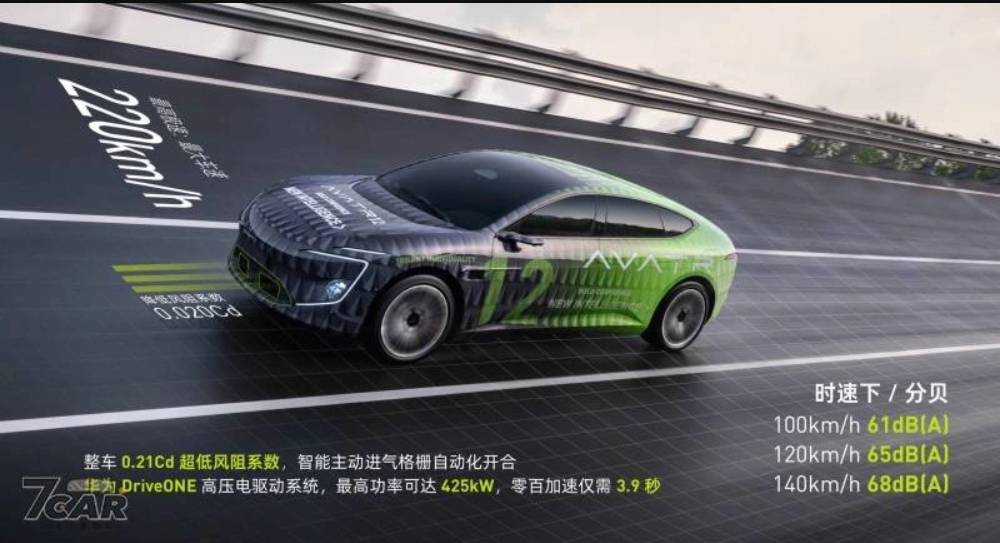
According to the manufacturer, the Avatr 12 has a drag coefficient of 0.21 Cd.
In response to this information, Avatr’s legal team denied the allegations on May 3, stating that “all this information is completely untrue.” The company also offered a reward of 5 million yuan (approximately 1.8 billion VND) to anyone who provides evidence of what it calls “dirty media” activities aimed at tarnishing the company’s reputation.
Additionally, Avatr announced that it will conduct a public test in a nationally certified laboratory, with the schedule to be released soon. The company stated that it will invite Elon Musk to witness the test directly.
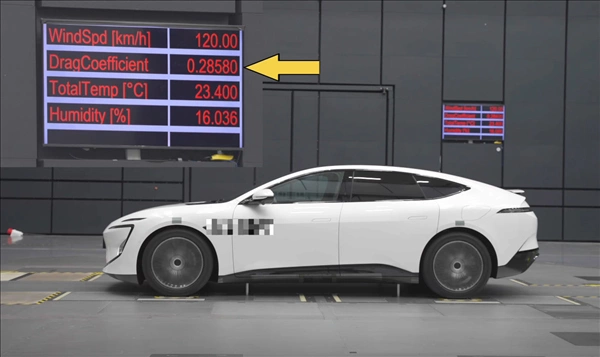
The car being tested for its drag coefficient. Source: CarNewsChina
Drag coefficients have been a key focus in China’s electric vehicle market recently. New models continuously advertise extremely low numbers to promote their energy efficiency and extended range capabilities. However, this has also raised questions about the accuracy of these specifications.
Here are some vehicles with record-breaking Cd values as advertised by their manufacturers:
– BYD U7: 0.195 Cd
– Geely Galaxy E8: 0.199 Cd
– Xiaomi SU7: 0.195 Cd
– Tesla Model S: 0.208 Cd
– Lucid Air: 0.197 Cd (independently tested in the US)
Among these, only a few models, such as the Lucid Air and Model S, have been tested by independent organizations like the EPA (US Environmental Protection Agency) or Consumer Reports magazine. In contrast, most Chinese domestic vehicles rely solely on manufacturer-provided data, lacking public validation.
Does Drag Coefficient Matter?
The drag coefficient (Cd) measures the resistance of a vehicle’s body to airflow as it moves – the lower the number, the more energy-efficient the car, and the longer its range. According to experts, reducing Cd by just 0.01 can increase the vehicle’s range by approximately 10 km at a speed of 120 km/h.
Therefore, the discrepancy of 0.07 Cd, if accurate, as indicated in the test video, is a significant issue, exceeding normal technical errors. In the highly competitive electric vehicle market, Cd has become an essential marketing tool.
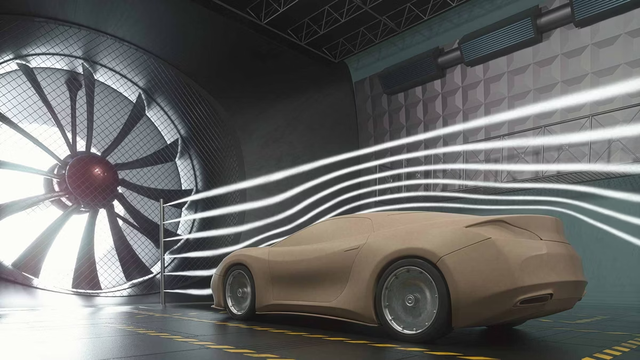
Drag coefficient has a significant impact on energy consumption, which is crucial for electric vehicles.
However, as seen with the Avatr 12, without independent verification, impressive numbers on paper may not reflect reality. This directly impacts consumer trust.
The controversy surrounding the Avatr 12 has sparked intense debates about transparency in the electric vehicle industry. With its commitment to public testing, Avatr now faces the challenge of proving the accuracy of its advertised specifications.
Ultimately, what consumers need is not just “impressive numbers” but honest, independently verified data, and most importantly, a driving experience that truly lives up to the promises made.
“Stock Exchange of Ho Chi Minh City (HoSE) Falls Prey to Scammers”
The image in question, according to HOSE, is a fabrication and does not reflect any official information from the Department.

